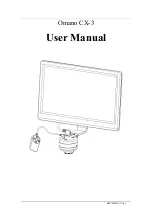
Concepts and features
R&S
®
ZNB/ZNBT
184
User Manual 1173.9163.02 ─ 62
The assignment between the analyzer ports and the cal unit ports can be detected
automatically. If auto-detection fails (e.g. because of a high attenuation in the signal
path), you can either enter the port assignment manually or connect matching port
numbers and select "Default Port Assignment".
When finished, remove the test cables from the unit, connect your DUT instead and
perform calibrated measurements.
Accuracy considerations
To ensure an accurate calibration, please observe the following items:
●
Unused ports of the calibration unit must be terminated with a 50
Ω match.
●
No adapters must be inserted between the calibration unit and the test ports of the
analyzer.
●
Allow for a sufficient warm-up time before starting the calibration. Refer to the
specifications of the calibration unit for details.
●
To ensure best accuracy, the analyzer automatically reduces the source power to
-10
dBm. If the test setup contains a large attenuation, deactivate "Auto Power Set-
ting for Cal Unit" in the "Calibration" tab of the "System Config" dialog. Ensure an
input power of -10
dBm at the ports of the calibration unit (please also refer to the
specifications of the calibration unit).
Maximum RF input power
The maximum RF input power of the calibration unit is beyond the RF output power
range of the analyzer, so there is no risk of damage if the device is directly connected
to the test ports. If you use an external power amplifier, make sure that the maximum
RF input power of the calibration unit quoted in the data sheet is never exceeded.
The available calibration types depend on the number of ports to be calibrated. For a
single calibrated port, the reflection calibration types are available ("Refl Norm Open",
"Refl Norm Short", "Refl OSM").
For n>1 ports to be calibrated, the analyzer provides the following additional calibration
types:
●
A full n-port (TOSM or UOSM) calibration for n calibrated ports.
●
n full one-port calibrations.
●
(n – 1) one path two port calibrations for n calibrated ports (all possible 2-port com-
binations from the "Node Port" to any other port). The node port is the source port
for each one path two port calibration (fully calibrated port).
●
(n – 1) transmission normalizations (bidirectional, forward or reverse) for n calibra-
ted ports (all possible 2-port combinations from the first port to any other port).
"Forward" transmission normalization means that the signal direction is from the
ports with the lower numbers to the port with the higher numbers.
Calibration
















































